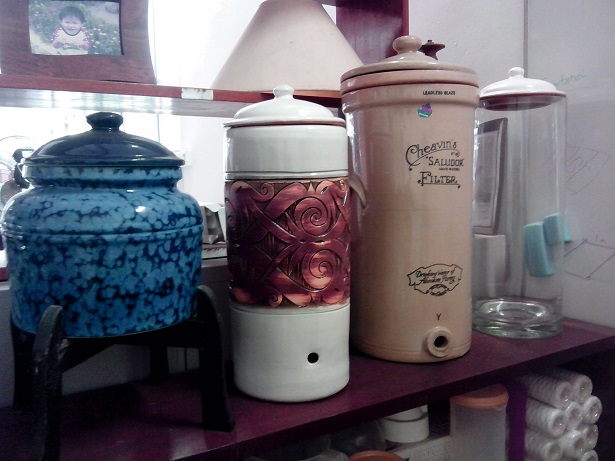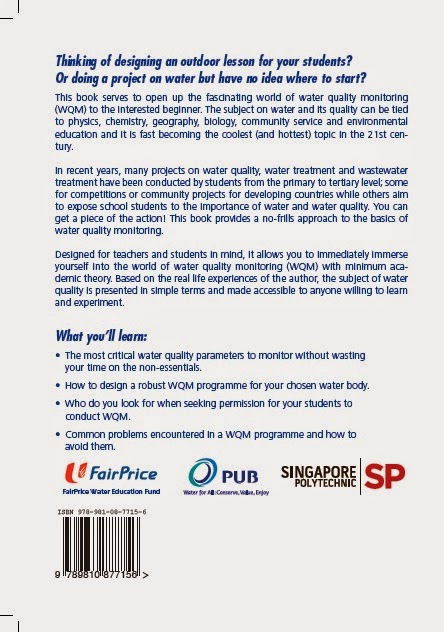Wetlands seem to be all the rage in Singapore right now. With the launch of
Sengkang Floating Wetland in November 2010, we now have the latest wetland launched (kinda reminds me of the incessant condominium launches in Singapore now) at Lorong Halus on top of our old landfill before Pulau Semakau took over. After talking to 2 staff from CUGE (Centre for Urban Greenery and Ecology), I found that there are many more wetlands being built all over our island, being part of experiments to clean up water.
Hey, don't get me wrong, I am all for installing constructed wetlands. If designed and managed well, they are effective in improving water quality (see
post on using plants to clean up water). They are also pretty to look at, especially if the wetland attracts a diverse range of wildlife. Unlike artificial concrete and steel in a wastewater treatment plant (WWTP), a constructed wetland is mostly natural which is where its greatest appeal lies. (Though constructed wetlands are supposedly cheaper than conventional WWTP, I was told that our much publicised wetlands run into price tags of six figures or more. Perhaps, most of the cost went into paying the foreign expertise for design and possibly imports e.g. floating mats to make a floating wetland.)
The best thing about Lorong Halus Wetland (LHW) is it is not just a showpiece. It actually works! It functions as a treatment unit for leachate escaping from the former landfill at Lorong Halus. Leachate from a landfill can contain all sorts of nasty contaminants like heavy metals and toxic organics which can escape into the Serangoon Reservoir and subsequently into the water treatment plant.
What does the future hold?
I personally believe that constructed wetlands (a type of phytoremediation - defined as the use of plants to clean up soil and water) will become more widespread in the near future. As society becomes more environmentally conscious (what with the issues of climate change being publicised almost non-stop nowadays), people are starting to look for sustainable and environmentally friendly methods of treating wastewater. Even though constructed wetlands have their limitations (e.g. a need for land), their natural appeal and sustainable character are hard to beat. And if you are business minded, this is one natural technology that should not be overlooked as its market (especially in developing Asia) is set to grow. I will be writing more about this in future posts.
Back to LHW
Figure 1: PUB (Public Utilities Board) seems to releasing this watershed map of Singapore in recent projects. (Read more about how to interpret a similar map in
post on Sengkang Floating Wetland.) Of particular highlight is the dark blue (also blown up as a circular insert above) area which delineates the watershed for Serangoon Reservoir.
Figure 2: Compare this old watershed map from PUB to the one in Figure 1. This old map split Singapore into only 3 catchment areas - East, Central, West. I believe this is more for adminstrative purposes (certain PUB departments are also split according to these 3 regions) rather than based on geography.
Figure: The wetlands are in the upper part of the figure, consisting of reed beds (green with white dots) and polishing ponds (small patches of light blue).
Figure: As in
Sengkang Floating Wetland, there are ample signboards to educate the visitor about the site. Here, it explains why a constructed wetland is needed at Lorong Halus. (Answer: to clean up the leachate escaping from the landfill.)
Figure: Another signboard explaining the need for polishing ponds after the leachate has gone through the reed beds. (Answer: the ponds are there to remove leftover nutrients and suspended particles.)
Figure: In the distance, you can see the Serangoon East Dam which closes up Serangoon Reservoir. I imagine like most local dams, it only allows water to flow out and not in from the sea, hence, keeping the reservoir water fresh and preventing seawater from intruding.
Figure: One of the reed beds consisting of Papyrus. You probably find that this layout does not fit the definition of a wetland but it does or at least, it is defined as a constructed wetland. This type is known as HSSF (horizontal sub-surface flow) where the wastewater flows in the sub-surface via the plant roots where treatment takes place.
Figure: Another reed bed, notice the gravel filling up the constructed wetland. This is advantageous because the wetland is "covered up", hence is aesthetically more acceptable - no unsightly wastewater and little offensive odours. Hey, you can even walk across the gravel bed as the gravel filling is well packed. Also the use of gravel allows the wastewater to flow underground easily through the empty spaces among gravel pieces.
Figure: A polishing pond. This design is also known as FWS (free water surface) as opposed to HSSF. By this time of the treatement process, the wastewater should be more or less cleaned since the reed beds have already done their dirty job of removing most contaminants. Therefore, an open water surface (or FWS) will be quite reasonable here.
(Update: you can find out more about how to clean up rainwater before it flows into our reservoirs in PUB's ABC (active, beautiful & clean) waters design guidelines. These guidelines advise developers and industry professionals to incorporate environment friendly features such as rain gardens, bioretention swales and wetlands in their developments.
Remember our watershed concept? Almost 70% of rainfall in Singapore lands in a watershed somewhere, ultimately ending up in our reservoirs. The plants and soil media employed in the above features act as “filters” to remove nutrients and sediments from the water going into our waterways.)
























